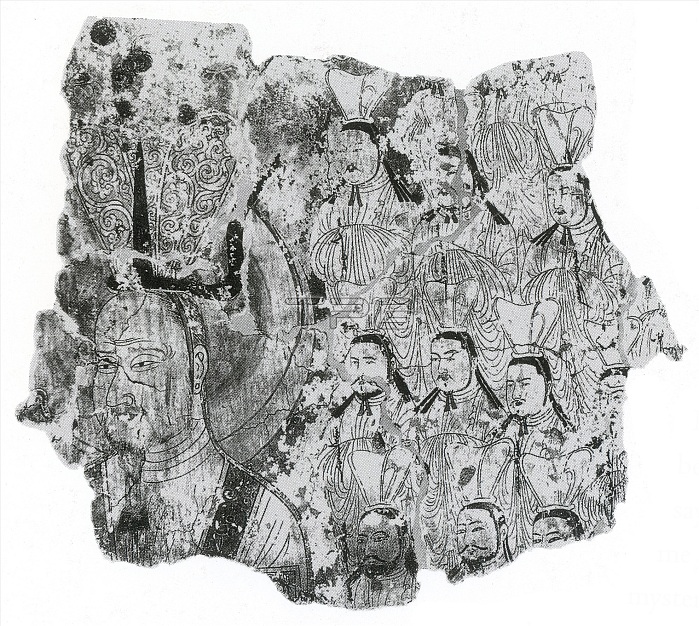
Piece of parchment believed to represent Mani and his followers. Undated, unknown artist. Mani (216 - 274 AD) was an Iranian prophet and the founder of Manicheism, a gnostic religion of Late Antiquity which was once widespread but is now extinct. Until the 20th century, no reliable information on Mani's biography was known. In 1969 in Upper Egypt a Greek parchment codex dating to circa 400 AD was discovered. It is now designated Codex Manichaicus Coloniensis. It combines a hagiographic account of Mani's career and spiritual development with information about Mani's religious teachings, and contains fragments of his writings. Mani's teaching is designed as succeeding and surpassing the teachings of Christianity, Zoroastrianism and Buddhism. It is based on a rigid dualism of good and evil, locked in eternal struggle. He decided that salvation is possible through education, self-denial, fasting and chastity, and claimed to be the Paraclete promised in the New Testament, the Last Prophet. Manichean tradition is also noted to have claimed that Mani was the reincarnation of different religious figures from Buddha, Lord Krishna, Zoroaster, and Jesus.
| px | px | dpi | = | cm | x | cm | = | MB |
Details
Creative#:
TOP22164967
Source:
達志影像
Authorization Type:
RM
Release Information:
須由TPG 完整授權
Model Release:
N/A
Property Release:
No
Right to Privacy:
No
Same folder images:

 Loading
Loading